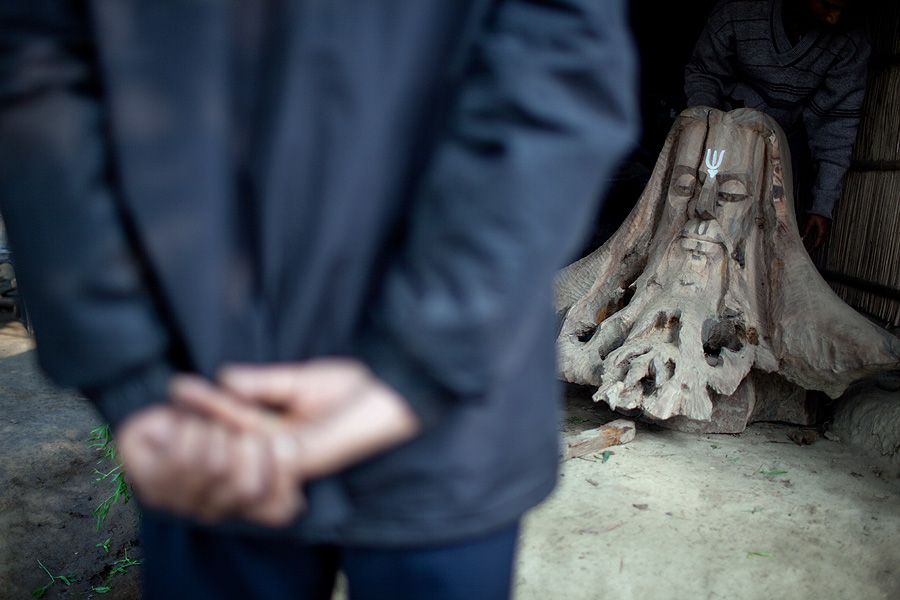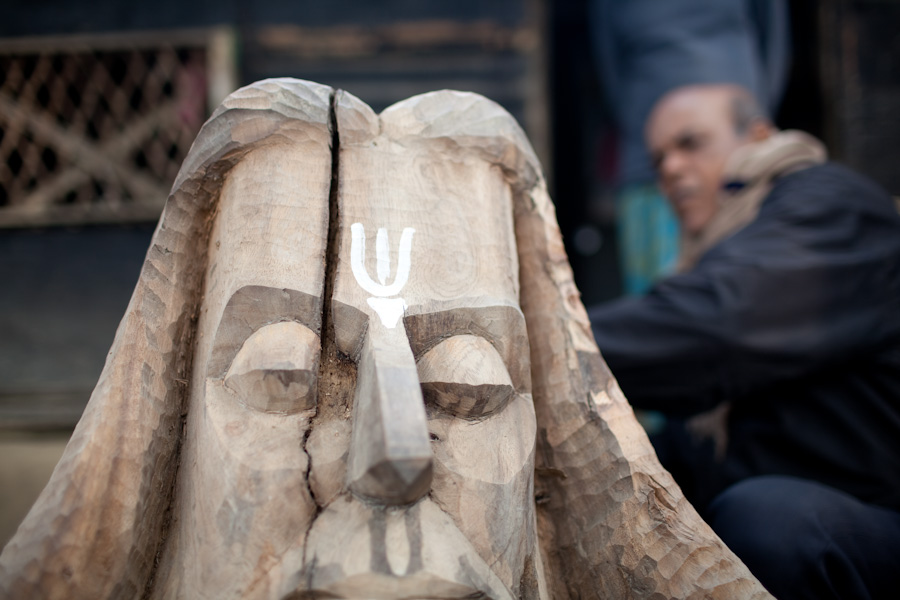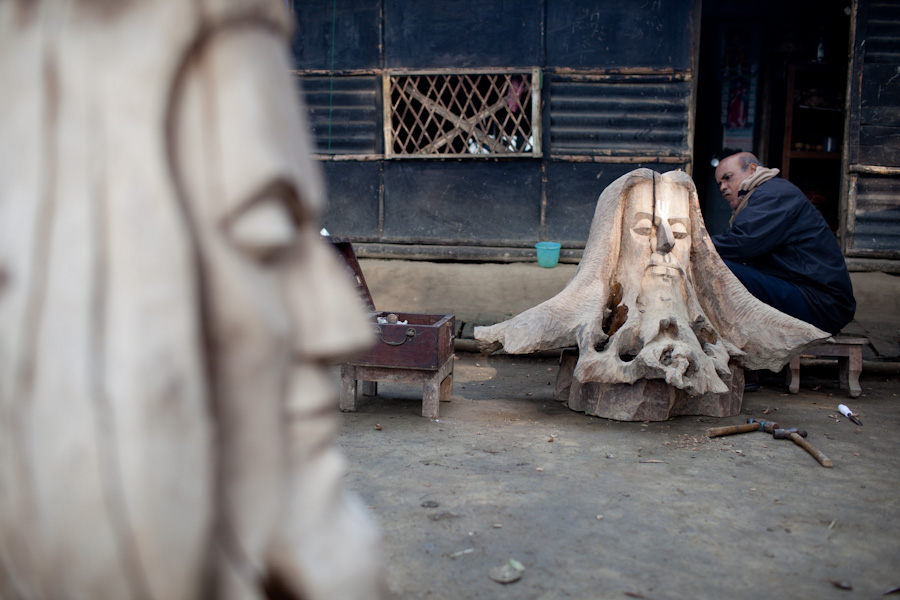“Ten kto wielbi ludzi tego świata,
znajdzie sens swych medytacji
W rzekach, bagnach, kanałach woda jest ta sama
I ten sam jest Pan
Jeden, z ludźmi zmieszany
Bez formy, świetlisty
To co bezcielesne, postać przybiera
W tych piekielnych czasach
Boskiej trzeba mądrości by zrozumieć
Człowiek jest wcieleniem Boga”
Lalon Fakir
Lalon Fakir urodził sie pod koniec XVIII wieku w Bengalu, zmarł po 116 latach. Nie wiadomo nic pewnego o jego dzieciństwie, Hindusi twierdzą że urodził się jako jeden z nich, ale nie byłby to szczególny powód do chwały, porzucono go bowiem gdy był chory na ospe jako kilkunastoletni chłopak, i zanim para chłopów, Matijan i Malam znalazła go dryfującego w rzece Kaliganga, był już poważnie zaatakowany przez bakterie, przez co ostatecznie stracił oko. Lalon to pseudonim jaki przybrał, bardzo uniwersalny, imię nie sugerujące kasty, pochodzenia, a nawet płci, świadomy wybór kogoś, kto od tego momentu konsekwentnie odmawiał mówienia o swych korzeniach, w swej filozofii odrzucał wszelkie podziały, religijne, narodowościowe, społeczne. Kiedy pytano go, Lalon – jaka jest twa religia – najważniejsze pytanie, determinujące wszystko na Wschodzie – Lalon odpowiadał – “religia? Jak ona wygląda? nigdy moje oczy czegoś takiego nie widziały”.
Wiadomo z pewnością że nowi, przybrani rodzice których nigdy nie przestał darzyc szacunkiem byli muzułmanami, sam Lalon pozostawał pod wpływem zarówno poety z tradycji Baulów, Siraja, jak i fakirów sufi, stąd też liczne w jego poezji odniesienia do tradycji sufizmu i określenia z niej pochodzące. Należy jednak zrozumieć że sufizm w Bengalu, jak zresztą nie tylko tam, ma Islam jako kulturowy punkt odniesienia, rodzaj kostiumu, niezbędny do operowania w danym społeczeństwie aby przekazac mu głebsze prawdy, nie zaś jako absolutną i jedyną formę. Stąd też Lalon mówił :
“Wedy są na prawo,
Koran na lewo,
ścieżka fakira biegnie pośrodku”
Zdjęcia pochodzą z indyjskiego regionu Nadia, ojczyzny Baulów, kiedyś połączonej z Kushtią w Bangladeszu, i prezentują prace Lal Mohana Gurii, oficera brygad antyterrorystycznych oraz rzeźbiarza tworzącego wyłącznie portety Lalon Fakira i rzeźby motywów z jego poezji w pniach drzew wyrzuconych przez rzeki. Idea jest taka, że podobnie jak człowiek ma tylko odkryć to co już w nim jest, tak dłuto odkrywa to co natura ukryła w drzewie.
***
“He who worships human beings in this world
All his meditations become fulfilled
In rivers, fens or in canals
The water is same
The same Lord
Moves alone
Mingled with humans
He expresses himself
Without a form
He is luminous
The incorporeal takes an appearance
You have to be
Divinely wise to know
In this infernal age
Man is the incarnation of God.”
Lalon Fakir
Lalon Fakir was born in the end of 18th century in Bengal, died after long life of incredible health discipline at the age of 116. There is nothing certain we know about his childhood, Hindu claim him to be born as one of them but that would be doubtful reason for their pride, as he was abandoned sick with smallpox as teenage boy, and when a couple of farmers, Malam and his wife Matijan, found him drifting in Kaliganga river, he was already seriously affected with the disease and finally lost one eye to it. Lalon was not his real name, he adopted it on purpose, as it was very universal, name suggesting neither class, origin, nor even sex, conscious choice of someone who since the “new birth” refused to speak about his roots, in his philosophy rejected all divisions, be it religious, nationalist, social. When asked about his religion, ultimate question defining identity of all people of the East, Lalon used to answer ” Religion? “How does religion look?” I’ve never laid eyes on it.”
One thing is certain, that his parents, who deserved his eternal respect, were Muslim, and Lalon was both influenced by his first mentor, then disciple, Siraj , poet from the Baul background, as well as Sufi fakirs. Therefore one can find in Lalon’s poetry plenty of Sufi terminology and references. It must be understood, however, that Sufism in Bengal, and in many other lands, uses Islam only as cultural reference, a kind of costume or dominant language necessary to reach members of society and convey deeper truth. This is why Lalon, radical of his time could say :
“The Vedas on the right
The Quran on the left
Fakir’s path is in the middle”
The photos were taken in Nadia, homeland of Bauls and fakirs, once connected to Kushtia in Bangladesh. They show work of Lal Mohan Guria, Indian bomb squad officer and sculptor, specialising in carving of Lalon Fakir and symbols found in his poetry in logs found at the banks of rivers. The idea is that same way as the only thing man must do is discover what is hidden inside him, so the carver only strips away the wood to show what nature hid inside.






